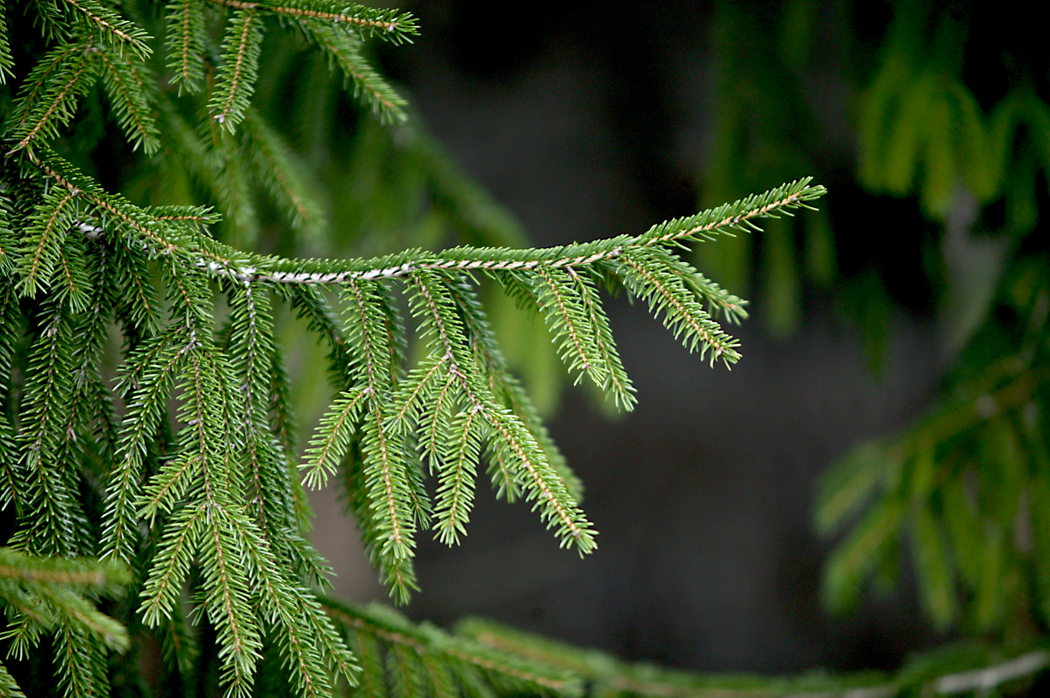The Botanical Garden is All Around the Zoo
The gardens offer prominent seasonal displays, including a large and popular tulip display in the spring and, perhaps, the largest combined annuals trials/display planting in the country. Trialing plant species for selections for home garden and landscape use in Midwestern urban conditions is also an important focus for the Zoo’s horticulture team.

Floral Garden Displays
This is the large circular bed between the Vine Street Village Plaza and the Reptile House. In addition to a wide range of trees shrubs, and perennials, this garden is where a great many of our tulips and annuals are planted.
Our spring tulip display is among the best in the nation. As the tulips finish, they are followed by annuals. Our annuals displays are also a trialing program, which, again, is one of the best in the country. Plants are evaluated for beauty, performance, and for their ability to provide pollen and nectar to pollinating insects throughout the entire growing season.
Quite a few other beds in the Vine Street Village Plaza are similarly designed and planted.
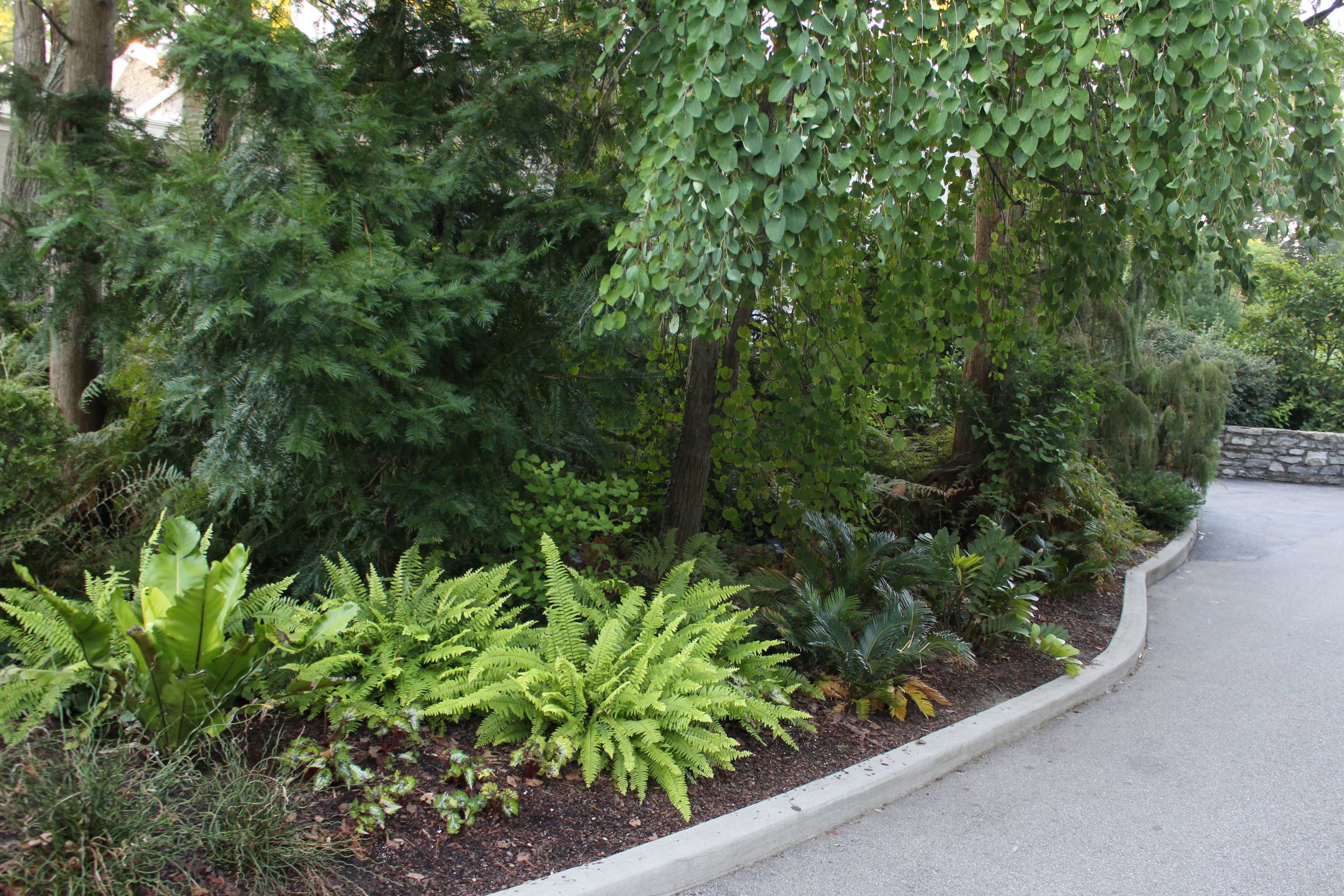
Dinosaur Garden
Located next to the Reptile House, this garden features ferns and conifers. See if you can spot the petrified log!

Roo Valley Exit Gardens
As you exit Roo Valley you’ll notice a number of beds that include many perennials. This is a good place to enjoy their beauty but to also observe how they are used in gardens—front or back, sun or shade, and more. The collection here includes hyssop, yarrows, baptisia, epimedium, ferns, and more. Additionally, there are quite a few newer shrub varieties being trialed, such as the Kodiak series of diervilla and hydrangea. Many interesting young trees will continue to grow and will eventually create a shadier garden which will require the perennial selections to change.

Native Plants Garden
This garden, located near the Passenger Pigeon Memorial contains many interesting native plants, many of which would have been favorite food sources for passenger pigeons. From early spring ephemerals to trees such as the bigleaf magnolias (Magnolia macrophylla), you can see and enjoy a smattering of native plants in a naturalistic garden.
Many of the plants are host plants for butterflies and moths. You might notice a colony of pawpaw trees (Asimina triloba), which is one of just a few host plants for the Zebra Swallowtail (Protographium marcellus), and spicebush (Lindera benzoin), which hosts the Spicebush Swallowtail (Papilio Troilus).
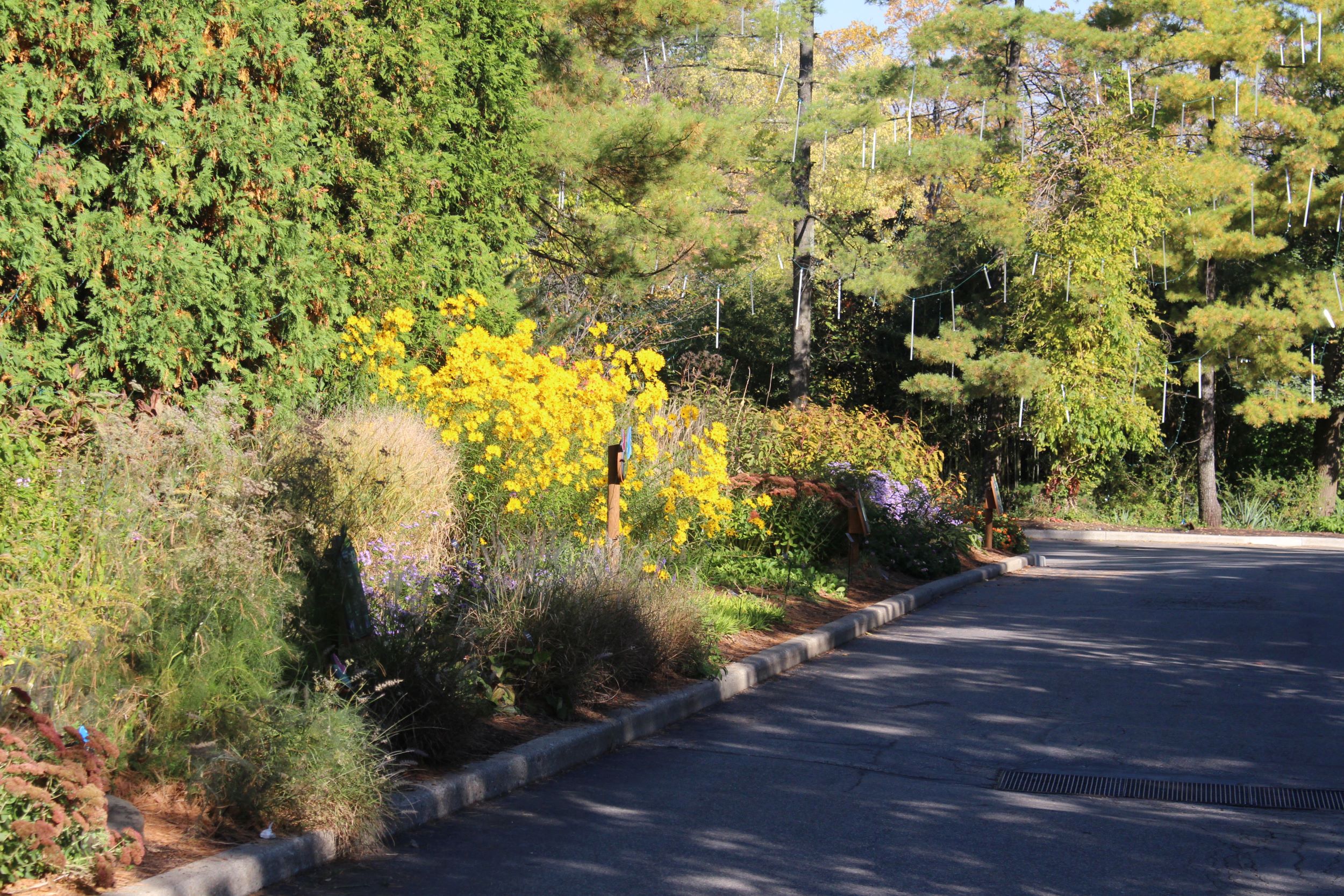
Butterfly Garden
Walking downhill, the Butterfly Garden extends from the Passenger Pigeon Memorial to the World of Insects on the left side of the path.
This garden features many favorite plants of butterflies. Of particular note is the Dutchman’s Pipevine (Aristolochia tomentosa) that grows up into the pines at the back of the bed. This vine is the host to the Pipevine Swallowtail (Battus philenor) and sometimes you will see them up feeding on the perennials and annuals and then flying up into the vines to lay eggs. Somewhat hidden in this garden are two rare native plants, prickly ash (Xanthoxylem Americanum) and hoptree (Ptelea trifoliata), which host the Giant Swallowtail (Papilio cresphontes).
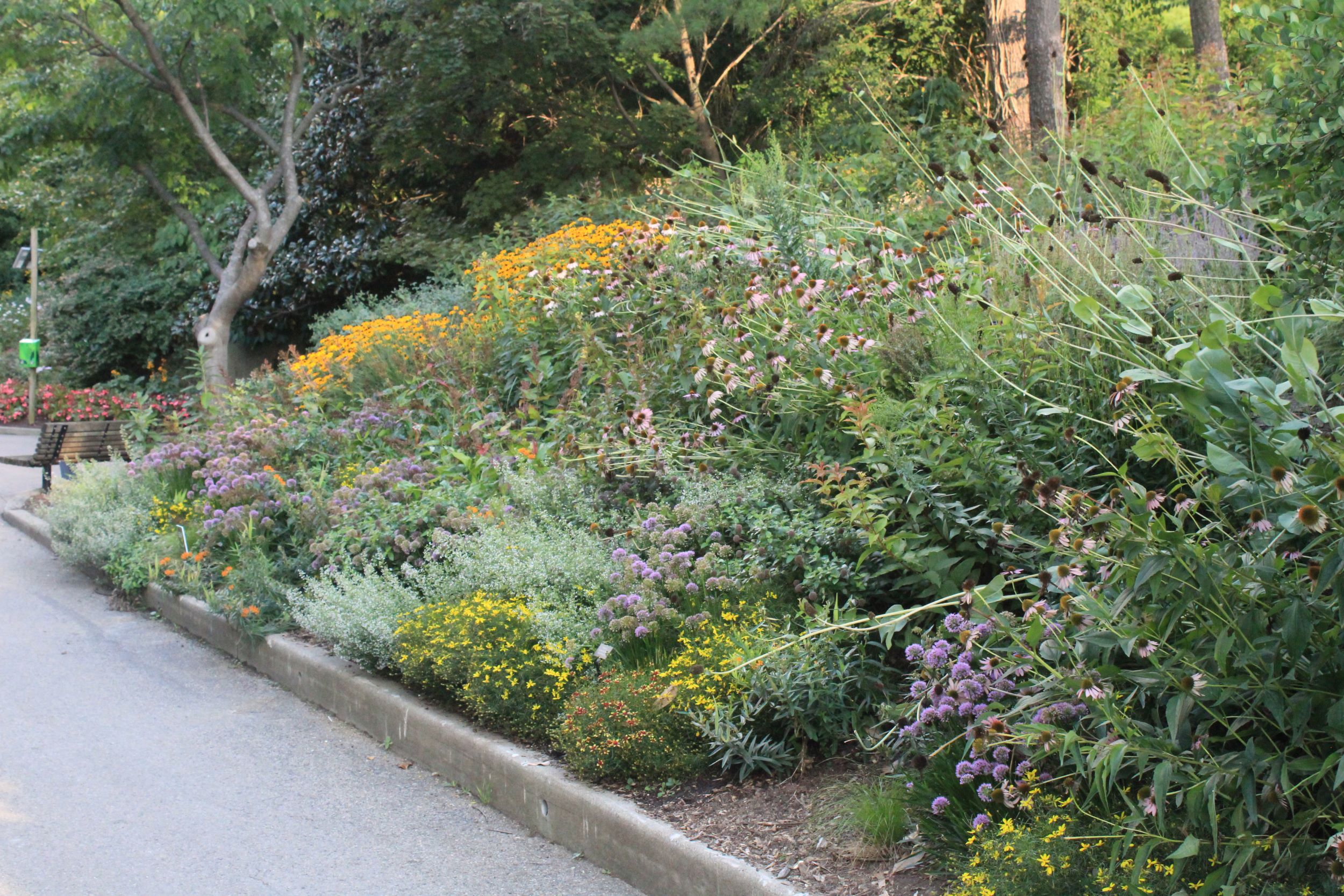
World of the Insect Garden
This new garden was planted in 2021. It is on the bank immediately to the right of World of Insects. Filled with a wide array of blooming plants, it is a continuation of the nearby Butterfly and Pollinator gardens.
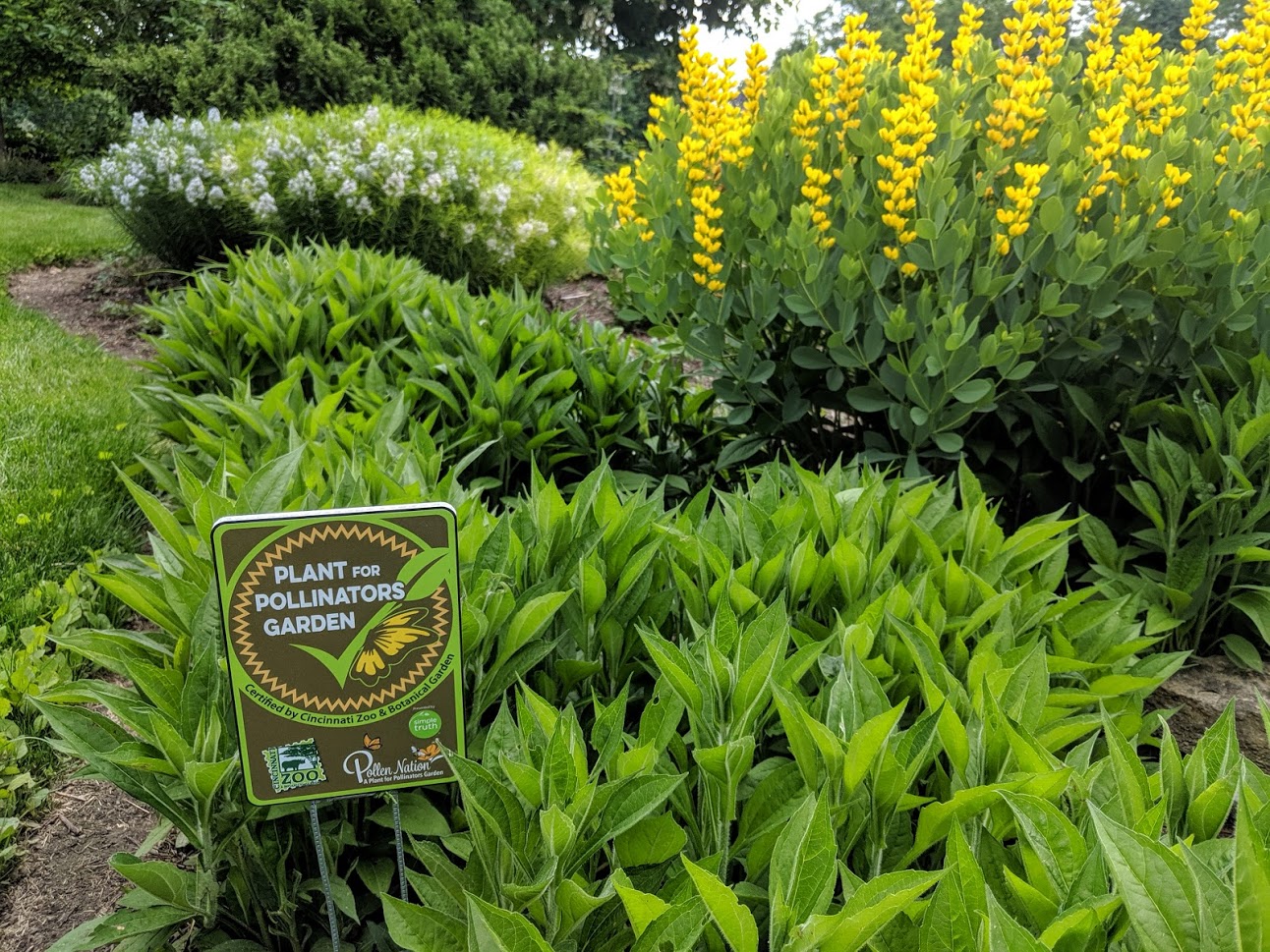
Pollinator Garden
This garden features a number of plants that are popular with pollinators. It is especially active in late summer.
Why Plant for Pollinators? As you can see, pollinator gardens are dynamic and beautiful and do much to beautify our landscapes and communities. They are also the single most effective and easy way for people to do real conservation.
Because of habitat loss, over-use of pesticides, and other factors, pollinator numbers are down, and this should be a concern for all of us. Not only are the pollination services of insects responsible for a large percentage of the food we and wildlife depend on, but many pollinators are vital for maintaining ecological balance by controlling pest insect populations. Starting, growing, or expanding a pollinator garden is a win-win-win!

Endangered Species Garden
The Plant Division of the Center for Research of Endangered Wildlife (CREW) conducts research dedicated to propagating and preserving endangered plants. The Endangered Species Propagation Program uses tissue culture to grow rare species which have challenged traditional methods of propagation. In 2005, the Cincinnati Zoo & Botanical Garden became a member of the Center for Plant Conservation (CPC). By partnering with the Center for Plant Conservation and botanical gardens around the country, CREW is applying these techniques to make plants available for research and reintroduction.
The horticulture Department via the Native Plant Program works closely with CREW, often growing plants in our nursery to use in our gardens and to plant back into the wild.
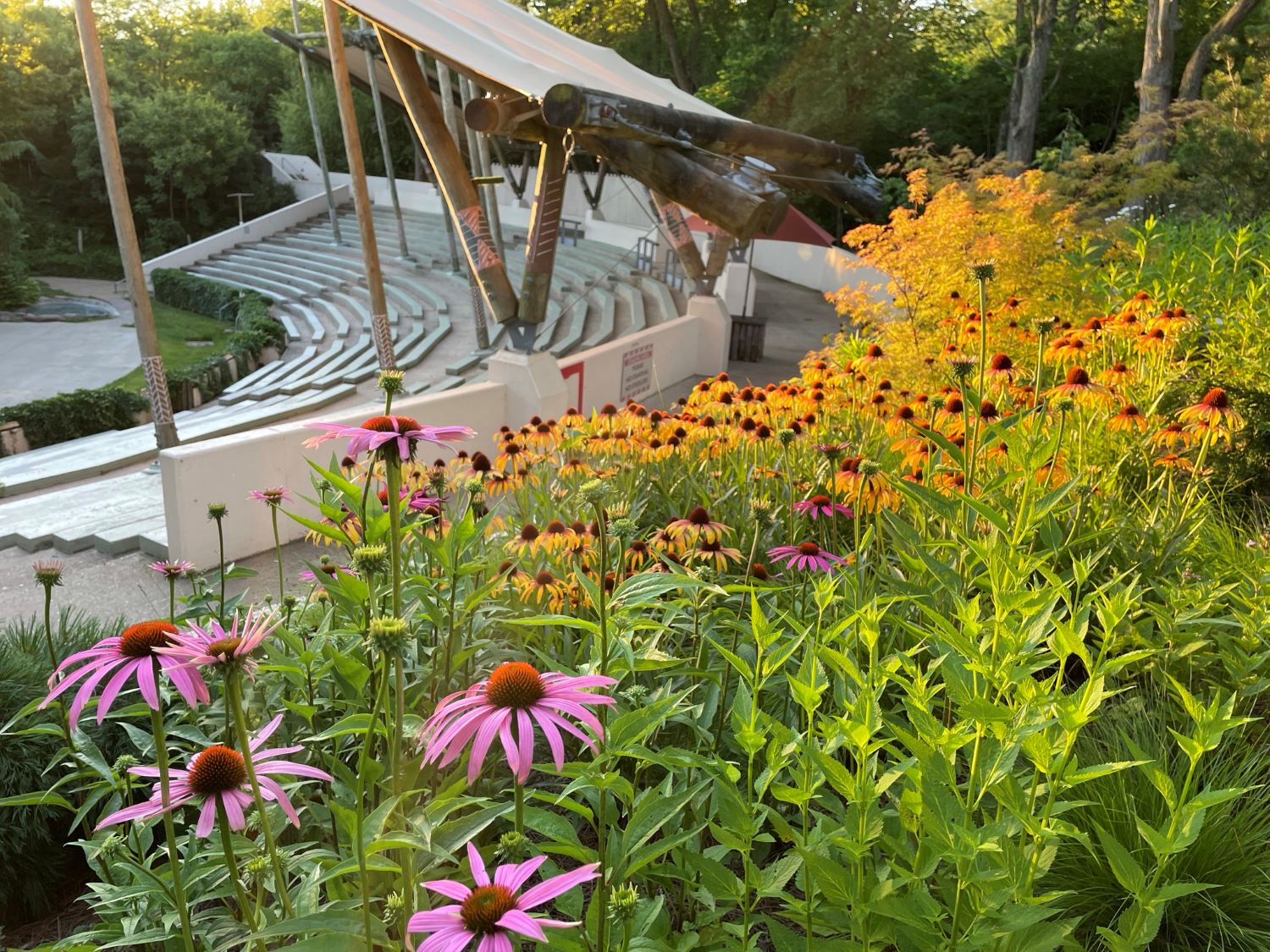
Wings of Wonder Garden
This is also a new garden, which was planted at the same time as the Insectarium Garden. It extends up the slope behind the Wings of Wonder grandstands and also features many pollinator-friendly plants. You’ll also notice a lot of conifers. Conifers provide winter interest and wind protection to the garden. They also provide refuge, habitat, and food for wildlife.
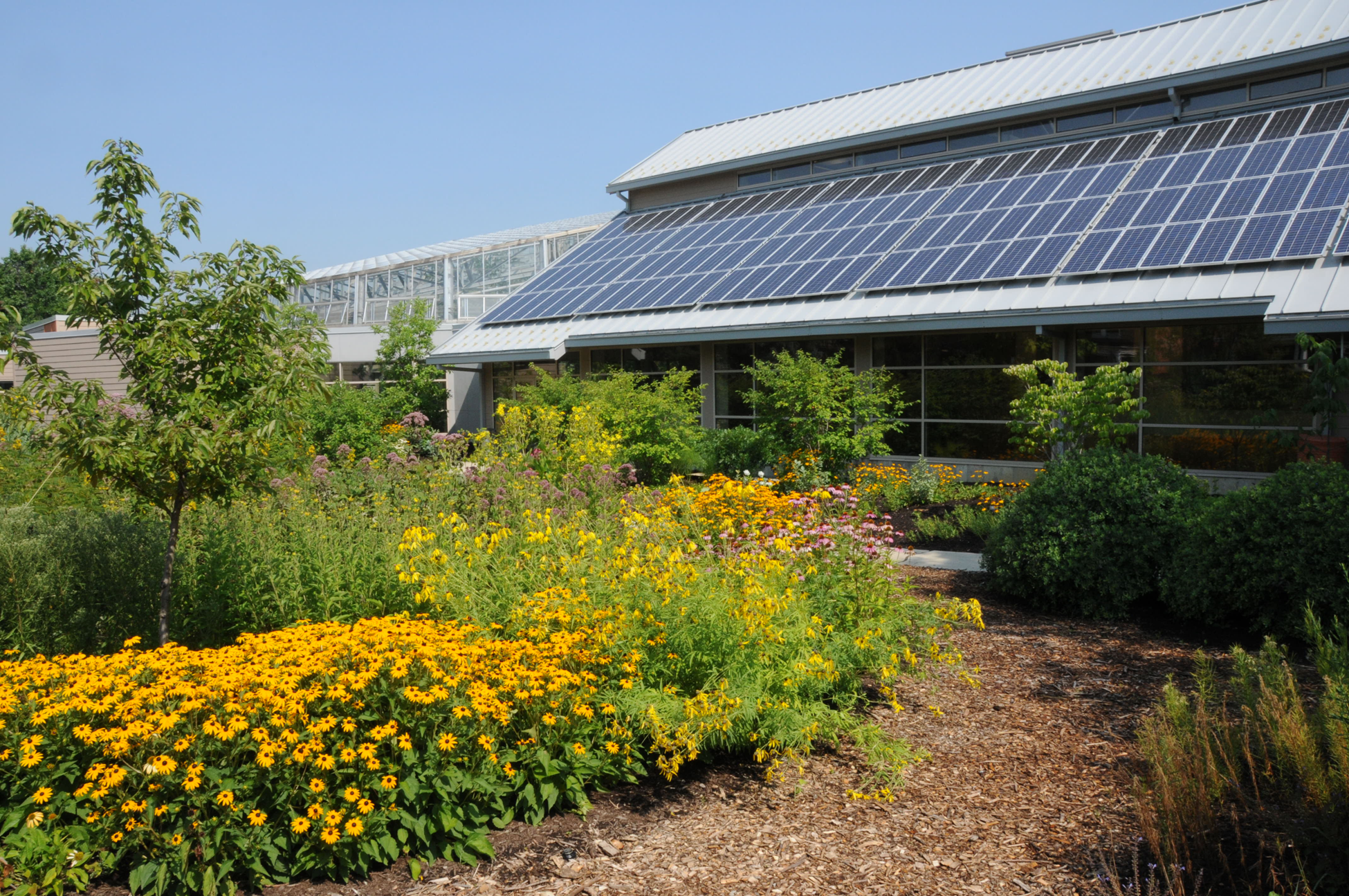
Education Rain Garden
Located outside of the Harold C. Schott Education Building is one of the area’s biggest and best rain gardens. Containing a tremendous diversity of mostly native plants, this garden provides continuous beauty while also attracting insects, birds, and other wildlife.
If you look closely, you’ll spot three shallow basins within the garden. All of the rain that falls on the Education building’s roof, much of the parking lot, and the garden itself is directed into these three depressions. The water then percolates into the soil rather than emptying into Cincinnati’s combined sewage system, which overflows untreated into the Ohio River during heavier rain events.

Shade Trees
Throughout the Zoo, you’ll find beautiful shade trees that provide relief from the hot sun. The bigger trees are not hard to find but if you might also notice many oaks, maples, lindens, zelkovas, elms, and other large species that were more recently planted and are still young. Although we monitor and care for older trees, and do our best to protect them from construction projects and other causes of stress, we know that a certain number of them will fail in future years. This is one of the reasons we so plant so many new shade trees. They will carry on the important job of shading the Zoo’s guests and animals into the future.

Bamboo Groves
You’ll notice a lot of bamboo growing at the Zoo. While bamboo is not a plant for home landscapes because of its aggressive spreading, it is—if sited correctly and contained—a great plant for the Zoo. Not only does it provide geographically appropriate ambiance to Asian and African exhibits, but it is also terrific at screening buildings and service areas, which helps create a better visitor experience. But even more than that, bamboo is a favorite food for many of our animals and, with guidance, our keepers often cut shoots as special treats.

Ornamental Tree Tour
Take the self-guided ornamental tree tour as you walk through our botanical gardens
Interactive Map (Mobile)
